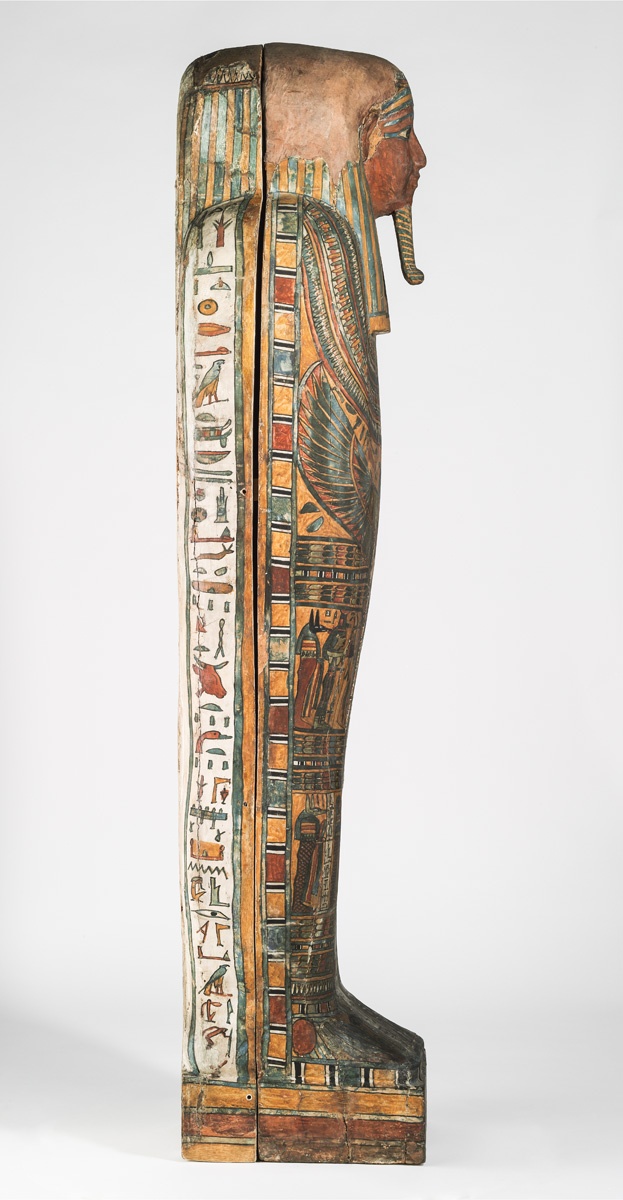In the Egyptian concept of the afterlife, the soul left the body on death in the form of a bird (called ba), and joined the cyclical path of the sun god. In order to be reborn after death, it was essential for ba to periodically find its way back to the mummy lying in the burial chamber, and unite with it. Thus the coffin had to resemble as far as possible the deified state of the deceased, so as to be recognisable to the returning ba. During the era of Libyan pharaohs (from the 10th century BC) the attitude toward death had become more passive. The fate of the deceased became more dependent on divine intervention than on the living, and, as a result, temples (and funerary statues within) gained a greater role in the funerary cult. Consequently, from the second half of the 8th century BC coffins were designed to emphasise their statue-like character with low pedestals under the feet, and back-pillars for the base.The central figure of the lid is the ram-headed, bird-bodied deity, the afterlife aspect of the sun god, protectively stretching out his wings over the deceased. The tail of the bird continues in a column of polychrome hieroglyphic inscription consisting of a short offering formula which divides the surface of the lid under the waist into two symmetrical halves. On each lateral zone run three scene panels with the figures of Osiris and protective funerary deities (the four Sons of Horus), and down below winged sun-discs provide magical protection and rebirth for the deceased.Éva Liptay
en

